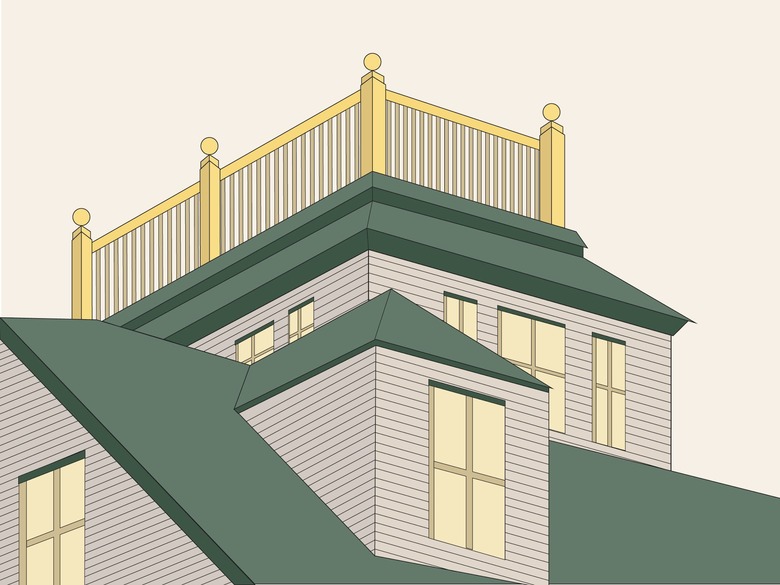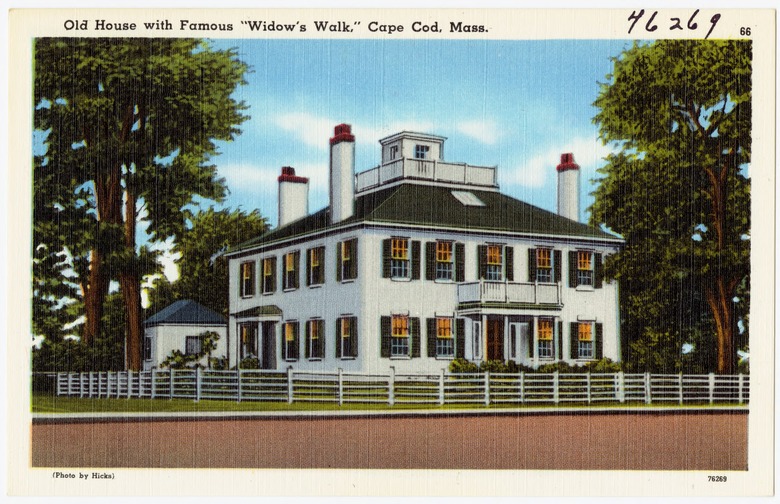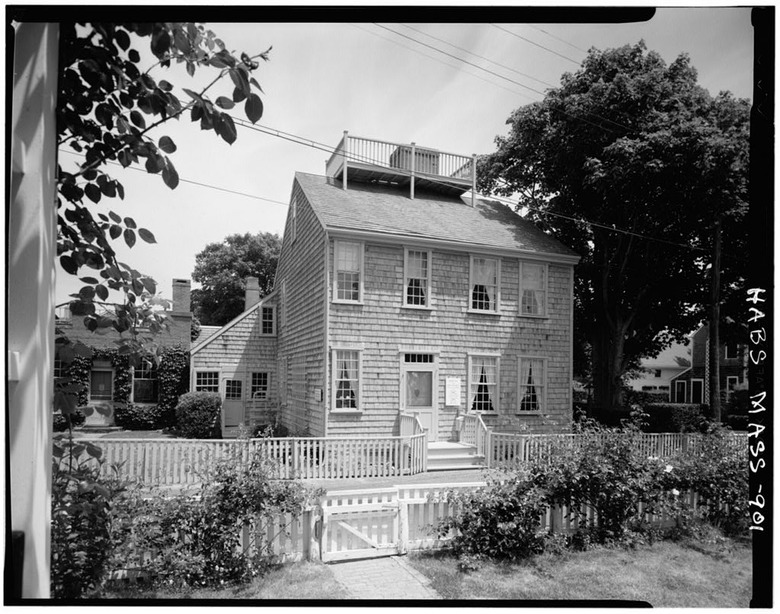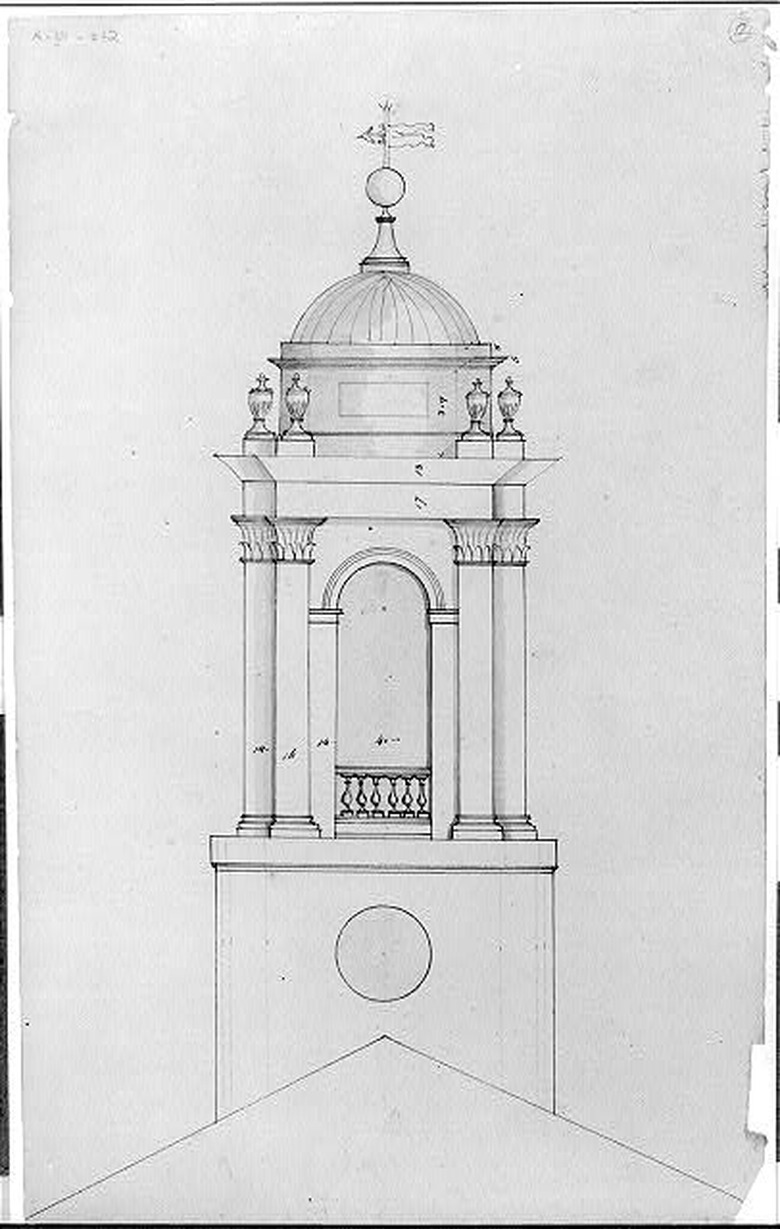The Unexpected Origins Of The 'Widow's Walk'
Sorry to all you hopeless romantics out there, but the story behind the widow's walk involves more actual flames than flames of passion.
Before we debunk the myth of the widow's walk, let's discuss exactly what the structure is. In the Dictionary of Architecture and Interior Design, author Mary Gilliatt describes a widow's walk — also known as a widow's watch, roofwalk, or captain's walk — as a railed rooftop walkway popular on the United States's East Coast. These walkways were specifically popular during the nineteenth century, at the height of the whaling industry, but their purpose has evolved quite a bit over time.
What is a widow's walk?
What is a widow's walk?
In his 2011 guide New England Icons: Shaker Villages, Saltboxes, Stone Walls and Steeples, renovation and real estate expert Bruce Irving states that Colonial houses referred to a widow's walk as a "scuttle" (which is also known as a small opening in a boat that allows water to drain out from the deck). A scuttle essentially served as a rooftop fire station because at the time, people were still using the fireplace for cooking. As a result, the chimney walls often collected grease from the food below, making chimney fires a more probable danger.
To combat the likelihood of a destructive flue fire, Colonial home builders would cut holes in the roofs and fit them with a trap door and ladder that led to the inside of the home (making it safe to use during an icy winter). At the bottom of the ladder, residents would keep buckets of water and sand that could be rushed to the roof and used to put out a chimney fire. With this in mind, widow's walks also provided homes with openings for smoke ventilation and air circulation.
As time went on, ovens and stovetops replaced fireplace cooking, and the scuttle evolved to be more aesthetic and less practical. Inspired by the cupolas of Italianate architecture, widow's walks became decorative, enclosed rooftop patios where one could watch the ships coming in and out of the harbor. In the November 1980 edition of The Old-House Journal — which provided restoration and maintenance techniques for antique homes — a cupola is described as a "small, turret-like projection on the roof of a house or barn." It may also be referred to as a belvedere, which is a type of cupola that is often square and built to house at least one person. This style was favored not just in coastal towns, but all over America.
Were widow's walks actually named after widows?
Were widow's walks actually named after widows?
As for the myth part, when scuttles transformed into widow's walks in coastal towns, they were known for their views of the ocean. Though the first use of the phrase "widow's walk" cannot be determined, during the nineteenth and twentieth centuries, the rooftop platforms became known as spots where wives-turned-widows would watch for the return of their husband's ship. While romantic, it's not likely that women would have had time to pace the widow's walk because they would instead be tending to their homes. Rather, widow's walks were likely a place where captains could keep track of ships coming in and out of port.
Interestingly enough, in New England Icons, Irving references a 1920s Boston Transcript article that calls the phrase widow's walk a "city term." In fact, in 1925, the president of Nantucket's historical society stated, "As all good Nantucketers know, they are just plain 'walks,' and were never called anything else until quite recently." Not a fan of the macabre, he concluded that people should refrain from calling them otherwise.
What are the pros of having a widow's walk?
What are the pros of having a widow's walk?
Despite the fact that widow's walks came to be ornamental, fanciful structures, the March 2010 edition of Fishermen's Voice states that they always retained a factor of practicality due to them being utilized for air circulation during hot, humid summers all across the country. However, keeping them enclosed year-round got to be too costly, which led to the more modern, open widow's walk that is a four-sided platform surrounded with a wraparound, typically wooden railing. Initially, this fencing was made of iron.
So next time you spot a widow's walk atop a home, whether in a coastal or inland home, you can take a minute to picture the panicked residents — not widows — of the past frantically working to put out a fire caused by their supper. And next time anyone tries to tell you the fairy tale of the widow's walk, you can tell them otherwise.



